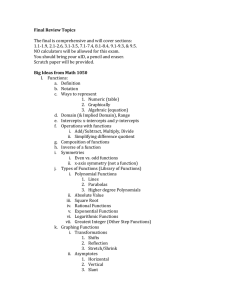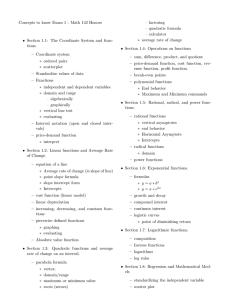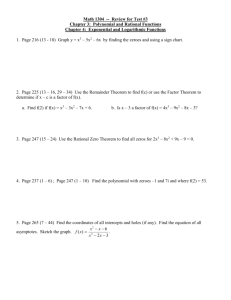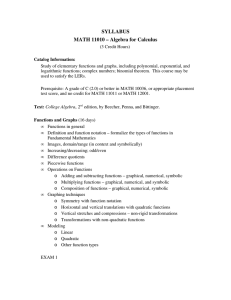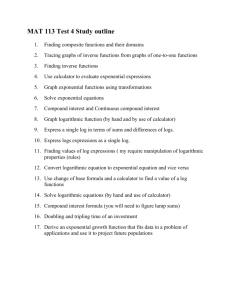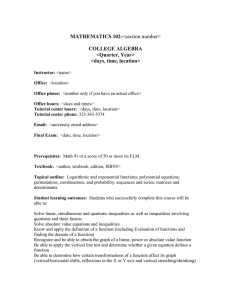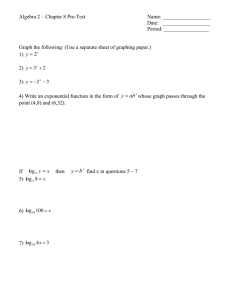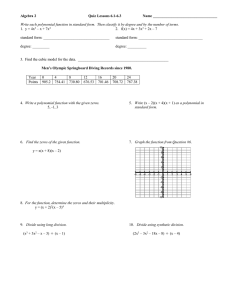Document 11908238
advertisement
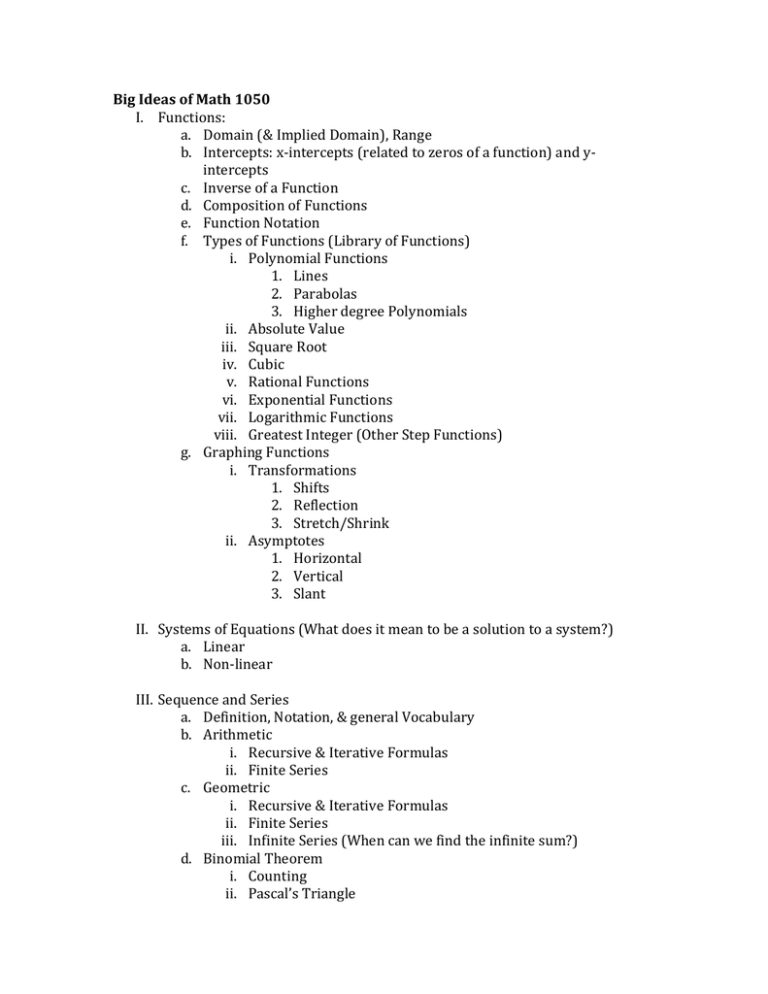
Big Ideas of Math 1050 I. Functions: a. Domain (& Implied Domain), Range b. Intercepts: x-­‐intercepts (related to zeros of a function) and y-­‐ intercepts c. Inverse of a Function d. Composition of Functions e. Function Notation f. Types of Functions (Library of Functions) i. Polynomial Functions 1. Lines 2. Parabolas 3. Higher degree Polynomials ii. Absolute Value iii. Square Root iv. Cubic v. Rational Functions vi. Exponential Functions vii. Logarithmic Functions viii. Greatest Integer (Other Step Functions) g. Graphing Functions i. Transformations 1. Shifts 2. Reflection 3. Stretch/Shrink ii. Asymptotes 1. Horizontal 2. Vertical 3. Slant II. Systems of Equations (What does it mean to be a solution to a system?) a. Linear b. Non-­‐linear III. Sequence and Series a. Definition, Notation, & general Vocabulary b. Arithmetic i. Recursive & Iterative Formulas ii. Finite Series c. Geometric i. Recursive & Iterative Formulas ii. Finite Series iii. Infinite Series (When can we find the infinite sum?) d. Binomial Theorem i. Counting ii. Pascal’s Triangle IV. Tools: a. Graphs b. Solving Equation i. Linear ii. Quadratic iii. Higher Order Polynomial iv. Rational v. Radical vi. Exponential vii. Logarithmic c. Polynomial Division i. Long Division ii. Synthetic Division 1. Remainder Theorem (related to evaluating a function at x=k) iii. Useful for finding Asymptotes iv. Sometimes useful when factoring or finding zeros of a function d. Partial Fractions (related to Linear Systems) e. Complex Numbers i. Definition (i2=-­‐1) ii. Adding/Subtracting iii. Multiplying iv. Conjugates v. Division vi. Fundamental Theorem of Algebra (Number of Zeros of a Function) f. Matrices i. Related to Linear Systems 1. Augmented Matrix and Row Operations 2. Matrix equations and Using the Inverse of a Matrix ii. As an Algebra 1. Scalar Multiplication 2. Adding/Subtracting 3. Matrix Multiplication 4. Inverse of a Matrix 5. Determinant of a Matrix g. Properties of Logs & Exponents i. Condensing Logs Expressions ii. Expanding Logs Expressions iii. Simplify Exponential Expression iv. Evaluate Log Expressions
